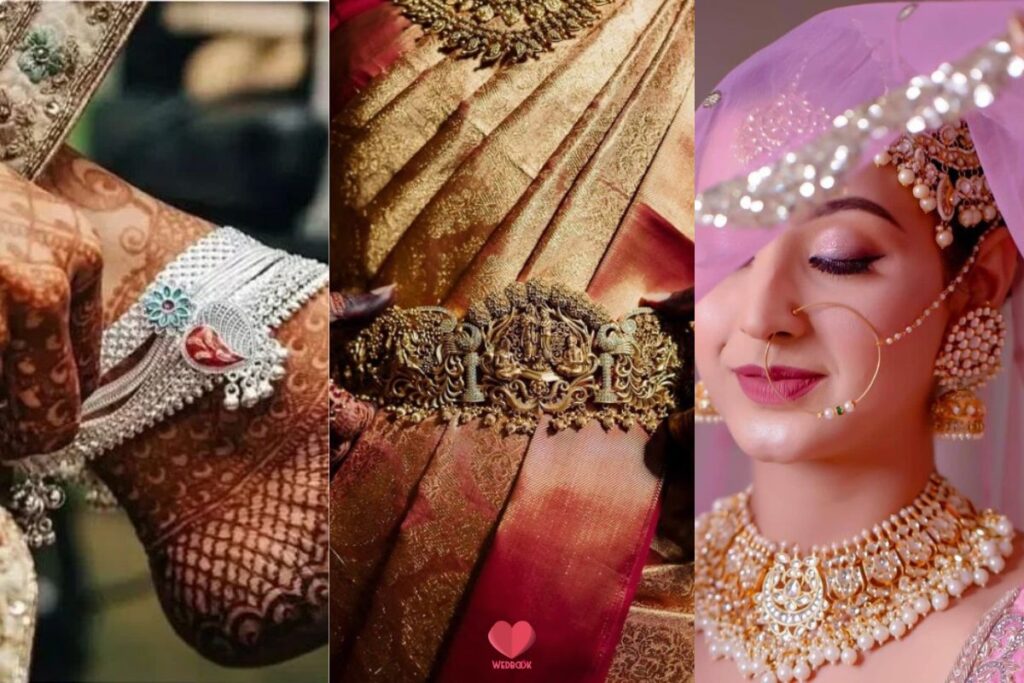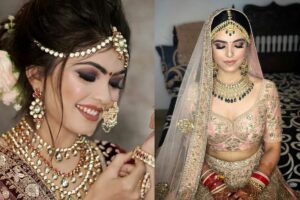Solah Shringar which translates to 16 adornments in English refers to a set of items and accessories for a married woman to enhance their appearance and symbolize their marital status. These Solah Shringar list items can sometimes vary depending on the region but often includes quite similar things like bindi, sindoor, kajal, etc. Below, find the history, origin, significance, and the entire Solah Shringar list – with the meaning behind each item explained.
What Is The History Of Solah Shringar?
The tradition of Indian women adorning themselves with precious gems and jewelry has been around for a long time. We can see queens clad in diamonds, pearls, and gold from ancient times, and even kings wore precious jewelry like sarpech, pendants, etc. The tradition of adorning oneself with various cosmetic and jewelry items has been a part of Hindu culture for a long time and is mentioned in ancient Hindu texts such as the Puranas and the Mahabharata. The concept of Solah Shringar is also mentioned in many folklores. One of the most popular among them is composed by Rabindranath Tagore which states how Radha undertook Solah Shringrar before her tryst with Krishna.
“Dress me with pearls and jewels
Decorate my forehead with maangtikka
My hair is spilling onto the ground
Bind it with a garland of champak.”
There’s another story associated with the origins of Solah Shringar. It’s said that Rati, wife of Kamdev, was blessed with the Solah Shringar by Goddess Lakshmi which helped her win her husband Kamdev, who was considered to be a very handsome man. Besides the beautification attribute, the concept of Solah Shringar is also rooted in spiritual and scientific significance. Some of this solah shringar presses the points on the body that helps in either mental, spiritual, or bodily functions. For example, bindi is said to be at the place of the “third eye” and strengthens wisdom and concentration while the kamarbandh helps to protect the woman from the evil eye and regulate her menstrual cycle.
Who Is The Goddess Of Shringar?
The Hindu goddess associated with Solah Shringar, the 16 adornments of a traditional Hindu married woman, is typically Goddess Parvati, the wife of Lord Shiva. Parvati is considered the epitome of beauty, grace, and femininity, and is often depicted as wearing the full complement of Solah Shringar. She is also considered the goddess of love, fertility, and devotion. In Hinduism, Parvati is considered a manifestation of the goddess Shakti, who represents the creative and dynamic power of the universe. By wearing the Solah Shringar, Hindu women are believed to invoke the blessings of Parvati and embody her qualities of grace, beauty, and strength. It’s also a tradition to offer Maa Parvati with 16 ornaments on Hariyali Teej and then worship the Goddess as per rituals.
What Is Included In Solah Shringar?
Find Below The Solah Shringar Items List:
#1 Bindi
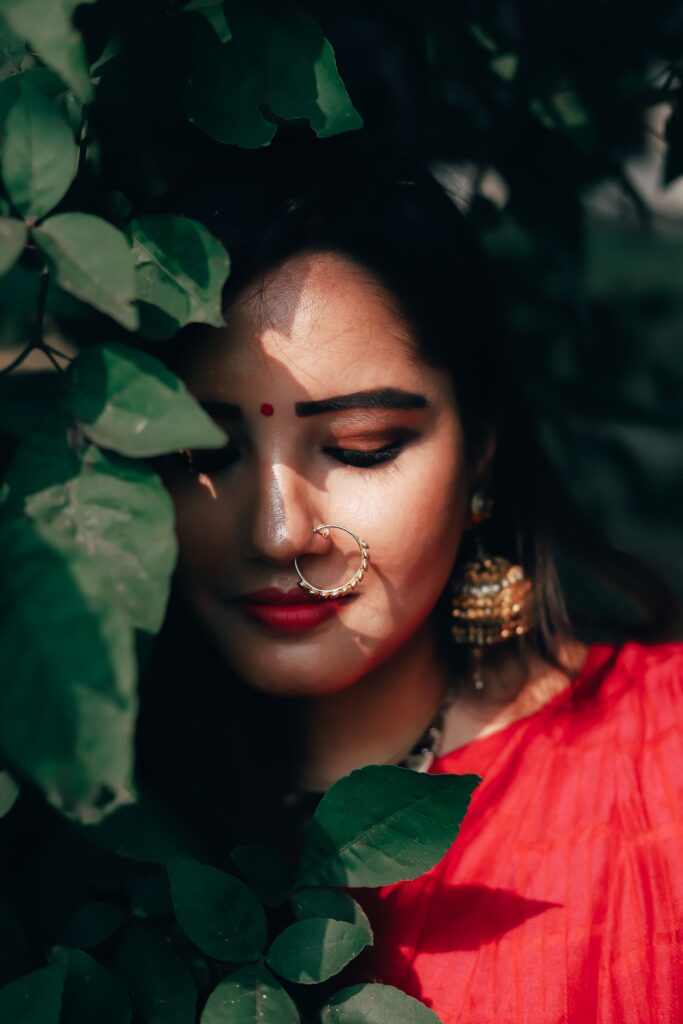
Bindi comes from the Sanskrit word “Bindu”, which means drop or particle. It’s basically a round decorative item worn in the center of the forehead, and the red color bindi is used to indicate the status of a married woman in India. Although, bindi is made in many colors and styles, and can be worn by both unmarried and married women. It’s said that bindi makes for an important part of Solah Shringar as it makes for a central adornment on your face and can have a significant improvement in your look. However, there’s also a spiritual reason why bindis have an important place in our religion.
It’s said that bindi is placed at the same place where “ajna chakra” or “eye chakra” is located. Chakras are basically energy centers in the body and their regulation of the flow of energy affects our physiological and psychological functions. There are 7 main chakras in the body, and they are activated through various methods like meditation, chanting mantras, yoga, massages, etc. Placing a bindi on your “ajna chakra” also activates it. This particular chakra is said to be associated with intuition, perception, and self-awareness, and is the key to unlocking higher states of consciousness. These qualities can help a married woman lead their life with happiness, a controlled ego, and peace.
#2 Sindoor
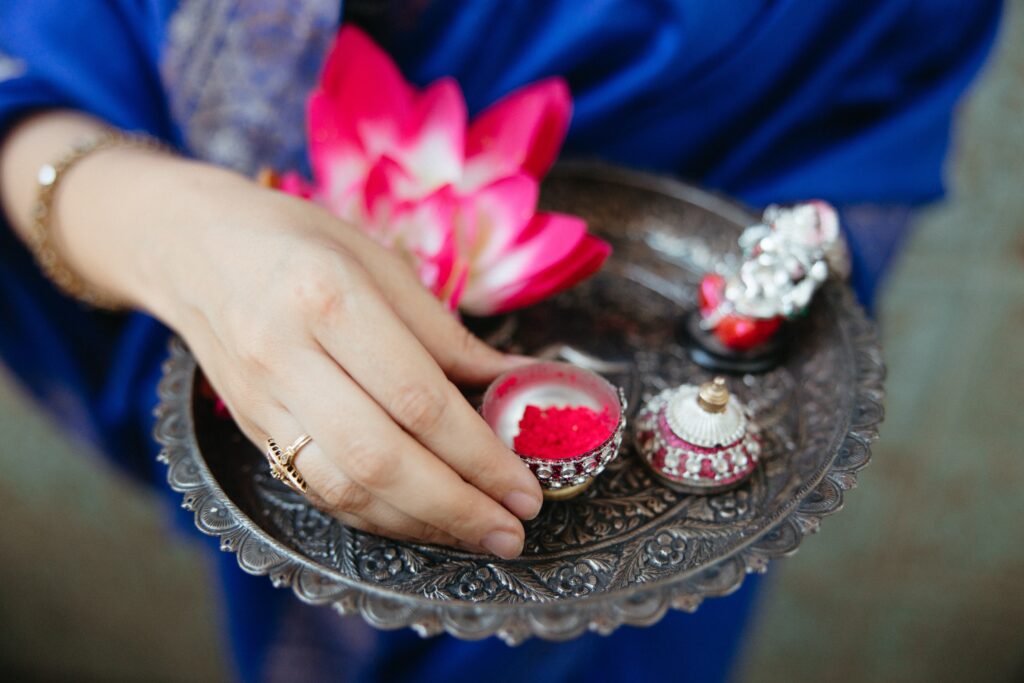
Sindoor is a red-colored powder applied on the forehead parting of a married woman. It’s the sign of a married woman, and the sindoor isn’t applied on the heads of unmarried women as this is against traditional practices. The sindoor is put on the head of the woman during the phera ceremony and is applied by the groom on the bride’s hair parting as a symbol of their sacred bond of marriage. There’s also a saying that if the sindoor falls on the bride’s face, it’s considered to be a sign of good luck.
Just like other solah shringar items, sindoor also has a significant and scientific meaning. It’s said that sindoor has small elements of mercury, which is said to cool down the body and make the woman feel more relaxed. Married women often deal with the stresses and anxiety of the new life and the simple practice of applying sindoor can help them calm down. Traditionally, sindoor only contains just small quantities of mercury, and the majority is made with turmeric and lime or alum. Nowadays, toxic ingredients like lead are also added which can be toxic. It’s advisable to look for lead-free sindoor especially if you’re planning to use it frequently.
Buy lead-free sindoor here: Powder-Form || Liquid-Form
#3 Maang Tikka
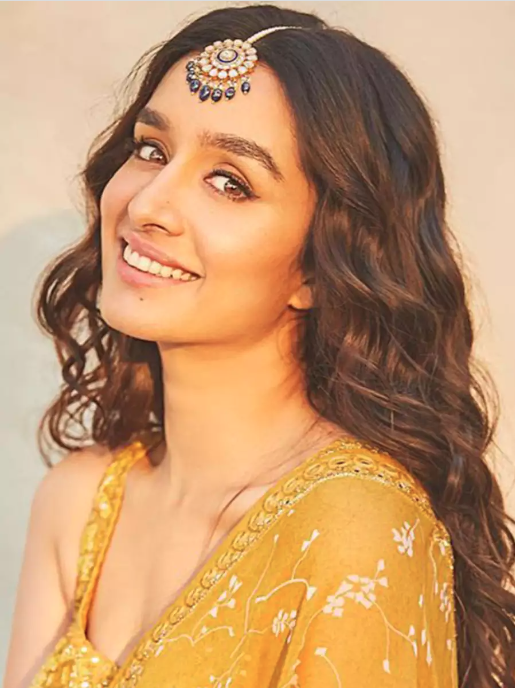
Maangtikka is a piece of jewelry worn on the woman’s head. It’s worn by brides on their wedding day, but can be also worn by an unmarried woman as a gorgeous piece of jewelry to go with their Indian look. The piece is often made with precious metals like gold, diamond, polkis, etc. In fact, its first appearance can be traced back to over 5000 years ago when it can be seen worn by both men and women. Today, the design of this hair ornament has manifested into many different styles and you can find one in the market that matches your personal style and preference.
Just like bindi, maang tikka also has a spiritual significance in the form of activating chakras. The tikka, however, activates two of our chakras – ajna chakra and crown chakra. When the ajna chakra is unblocked, it helps in balancing emotion and reason, increases consciousness, and helps us transcend to a higher realm. Crown chakra, on the other hand, helps us connect to our intuition and inner wisdom and brings a greater sense of peace, contentment, and fulfillment in our lives. Maangtikka is also said to signify the union between the bride and groom, and is often also seen in the form of its more embellished counterpart – mathapatti on brides as well!
#4 Kajal
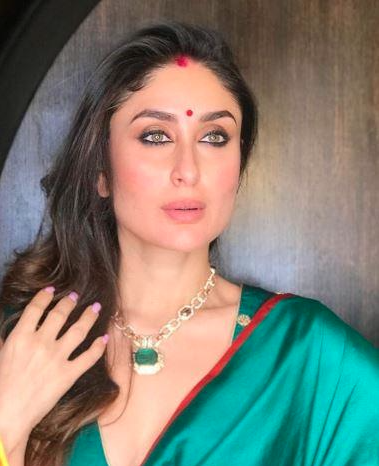
Kajal or kohl forms the fourth component of the solah shringar items list. It is mostly applied to the lower waterline of the eyes to intensify the beauty of the eyes and enhance their shape. Kajal is traditionally made with ghee, soot, or camphor, and is applied in India from the time when you were a baby. Some of the ingredients of kajal are said to have amazing benefits for the eyes. For example, natural ingredients like ghee and castor oil help in moisturizing the eyes, cool them down and give them relief from tiredness. Camphor also helps cool down the eyes, and many of these natural ingredients also help in protecting the eyes from the harmful effects of the Sun.
Besides its physical and beautification effects, kajal is also believed to help stave off the evil eye and protect the bride from any evil energy. A black dot is also put behind the ear to magnify the effects of kajal protecting the individual from the evil eye. In addition to its cultural and spiritual significance, kajal is also widely used for its cosmetic benefits. It is often used to make the eyes look larger, enhance the eyelashes, and create a more dramatic look. Today, kajal is available in a range of colors and formulations, from traditional herbal formulations to modern, waterproof, and long-lasting varieties.
Buy all-natural kajal here.
#5 Nath
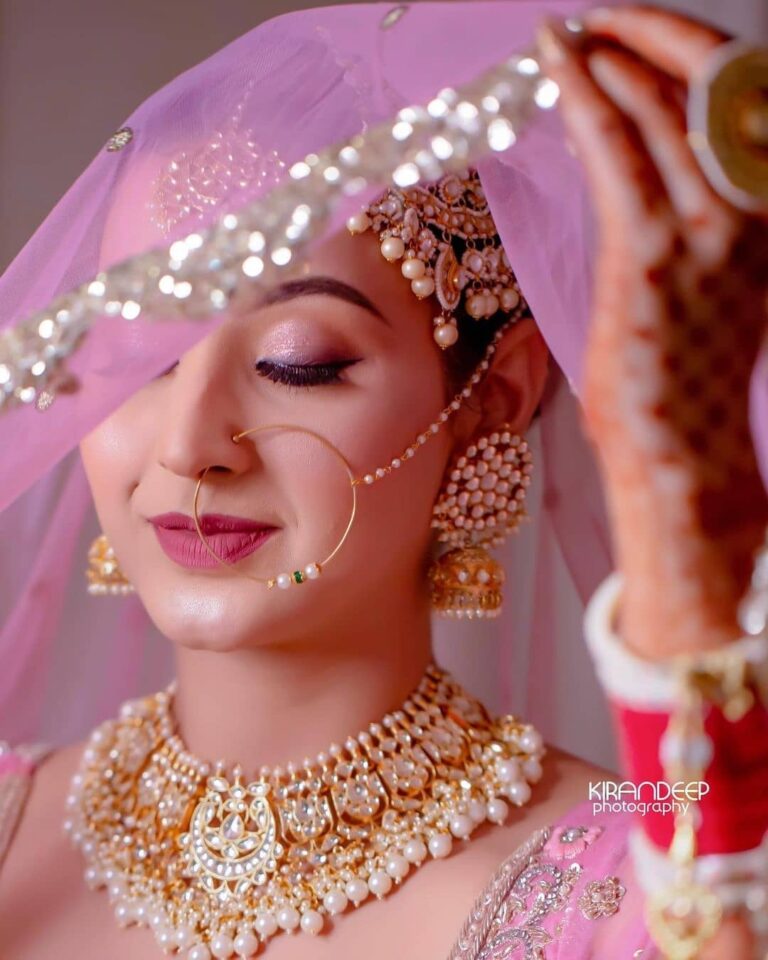
The nath or nathni is a nose ring or nose stud worn by Indian women. It can also be worn before marriage. Brides often wear this nose ring to enhance their look, and some even go for OTT nathni with stylish designs to give their bridal avatar a regal attribute. Nath or nathni comes in different styles and can be worn in the form of simple studs, plain rings, or an embellished ring attached to a chain that goes behind the ear. The latter is often worn on special occasions like weddings or festivals. This Solah Shringar item can be worn on the right side or the left side, depending on personal preference or what your culture dictates, in South India, the nath is worn on the right side while in North India it’s often worn on the left side.
Besides the aesthetic appeal, the nath also has a religious significance as it’s said to be worn as a symbol of respect for Goddess Parvati. In Ayurvedic sciences, it’s also said that the piercing on the nose is associated with your reproductive organs and can help women in dealing with pain during their periods and the pain during labor and childbirth.
#6 Haar
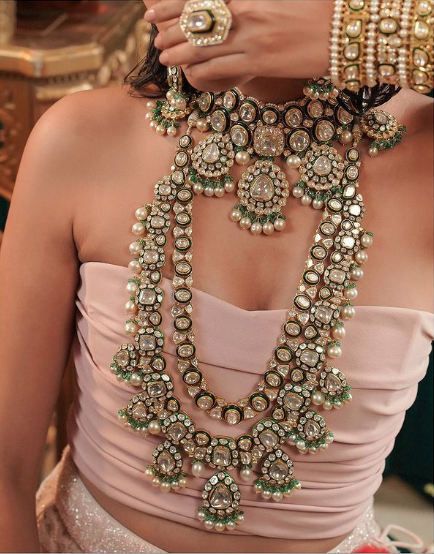
Haar or necklace is a type of jewelry worn by Indian women and is considered an essential part of the woman’s jewelry collection. Necklaces come in a wide range of styles, designs, and materials, including gold, silver, diamonds, and precious stones. They can be simple and delicate or ornate and elaborate and are often decorated with intricate designs and embellishments. One type of haar is the mangalsutra, which is an auspicious thread made with black beads and precious metals which signifies the bride’s status as a married woman.
In addition to their aesthetic appeal, necklaces are also considered to have spiritual significance in Hinduism. They are believed to bring good luck and protection and to enhance the beauty and femininity of the wearer. They are also said to protect both the bride and groom from the evil eye and signify their union as well. Today, necklaces are widely used by women in India, both for special occasions such as weddings and traditional celebrations and for everyday wear. They are often paired with other forms of traditional jewelry, such as earrings, bangles, and rings, to complete the traditional Indian bridal look.
#7 Karn Phool (Ear Ornaments)
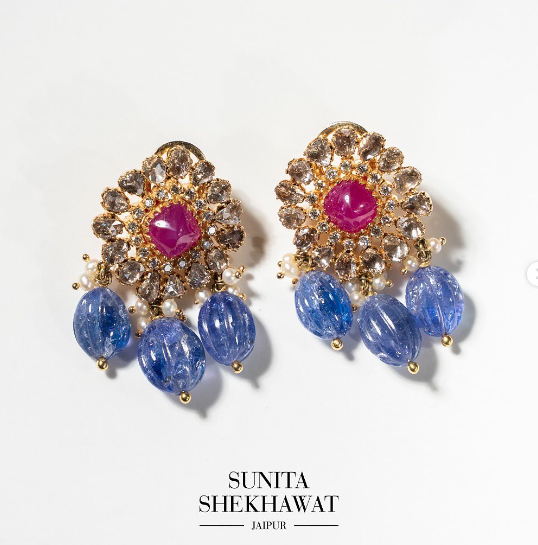
Karn Phool is basically earrings or ear ornaments and forms another major part of the bride’s Solah Shringar items list. Earrings come in various styles and the bride can choose from any of these styles to elevate her look at her wedding. Some styles include chandbalis, jhumkis, studs, and dangler earrings. Brides often choose one of them depending on the vision of their look and comfort. These earrings can be heavy and to help you amp up the comfort of wearing them, we have also created a blog on how to wear heavy earrings without pain and stretching? Just some tips to make your special day memorable and comfortable!
Besides the aesthetic appeal, it’s also said that the piercing of earrings also has a therapeutic effect, and piercings on different parts of the ears can help with various types of pain in the body. The piercing also helps strengthen the eyes and sharpens the mind. That’s why many people in India get their ears pierced at an early age so as to aid in their brain development. In Hinduism, earrings are also associated with feminity and grace, and many Indian Goddesses are often depicted wearing heavy, ornamental earrings.
#8 Mehendi
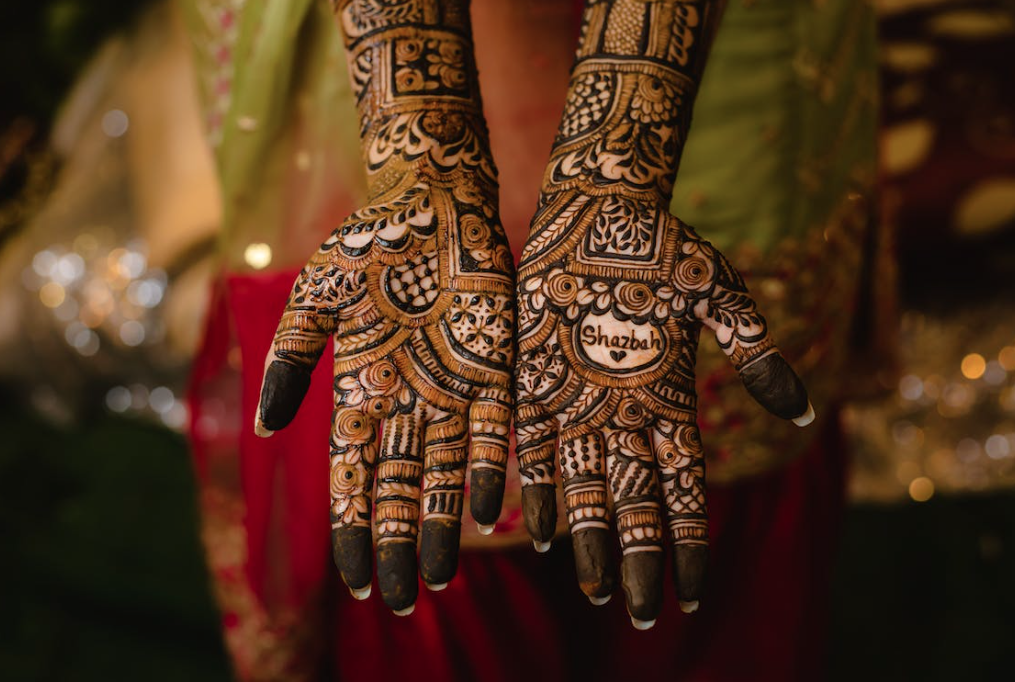
Mehendi or henna is a paste made with the leaves of the henna plant, that’s dried, crushed, and mixed with ingredients like lime, sugar, and water to form a mixture. This is applied on the hands and feet of the bride and groom in the form of intricate designs as a means to beautify their look. Mehendi also has a cooling effect on the body and is said to calm down the anxiety and stress of the bride and groom before the wedding. It helps soothe their pre-wedding anxiety and jitters so they can enjoy their special day with a peaceful mind.
Besides being a part of Indian woman’s Solah Shringar, mehendi has become a huge pre-wedding revelry in Indian weddings. A complete day is dedicated to celebrating the event where the bride and groom along with family members apply mehendi and have fun throughout the day. Mehendi has been around for more than 5000 years and the art of henna is also practiced in other countries like Pakistan, some parts of the Middle East, and Bangladesh, besides India. To help you sort out your mehndi design needs, we have done several blogs like simple mehndi design, bridal mehndi design, kids mehndi design, feet mehndi design, etc. to help you with inspiration and ideas.
#9 Baajubhand
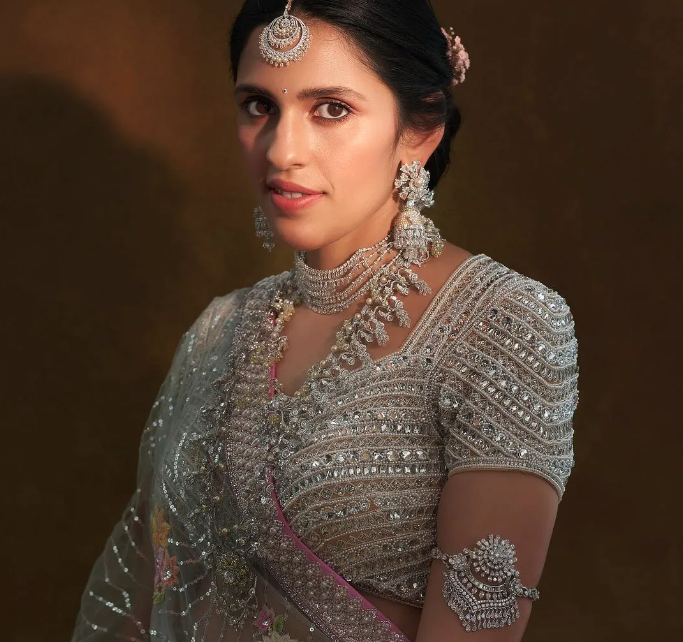
Baajuband or arm bracelet is one of the essential elements of Solah Shringaar. Originally, this piece of jewelry was only worn by men. You will see many portrayals of men in a rural setting wearing a baajubandh. Women started wearing a fancier version of the arm bracelet later on. They used to wear it on both of their arms, but now it’s considered more fashionable to wear it on just one arm. You will see the concept of wearing arm bracelets on many brides of different cultures, but mainly South Indian brides and Maharashtrian brides. In North India, the concept has lost traction, but whenever we see any bride with a baajubandh, it sure makes us want to wear one at our wedding or any other special occasion too!
Baajubandh are generally made of precious metals like diamonds, polkis, gold, and colored gemstones. They are traditionally included in the Indian woman’s look, and that’s why you will often see Ambani (who take their traditions very seriously) women wearing them. Recently, both Radhika Merchant and Shloka Ambani were seen wearing it at the former’s engagement party. It’s certainly not necessary to wear a baajubandh, but it sure does enhance and (sort of) completes your traditional look as well.
#10 Bangles
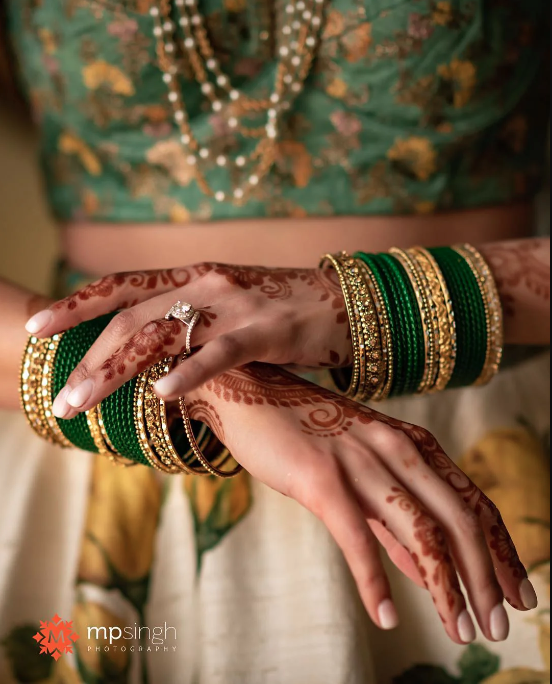
Bangles have become a staple in an Indian woman’s wardrobe. They are not just a part of the Solah Shringaar items list, but they are also often found in the hands of unmarried women and even baby girls in India. Bangles are sometimes worn in the form of just kadas where a single bangle is bedecked in precious gems to add to the beauty of the traditional look. Bangles also form an important part of the married women’s look as in many cultures, chooda (a set of bangles worn by brides) are supposed to be worn by married women for a certain number of days even after marriage.
Besides the aesthetic appeal, bangles also have health benefits. Wearing bangles causes friction which leads to an increase in blood circulation and lowers your blood pressure. Wearing your bangles is also recommended for pregnant women after 7th month to aid in the healthy development of the baby’s brain, which happens majorly during the 9th trimester. Astrologically, some people believe that bangles ward off negative energies and help to maintain a positive aura around women. In some cultures, it’s also considered inauspicious to not wear bangles for married women.
#11 Haathphool
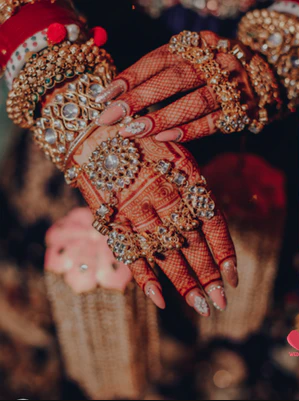
Haathphools have been around for ages, and their main design consists of a bracelet around the wrist connected through a line of decorated strands resting on the back of the palm with a round ornament or medallion in the center which is further connected further through rings on every finger or just one – the latter being the most popular style lately for brides. Hathphools remain one of the key components in the bridal look today. Although more toned-down and simpler versions are what’s popular among women today. Detachable hathphools – where you can wear the ring and the bracelet separately – are also well-favored to make them more versatile.
The concept of hathphools was majorly popular with the Mughals, from where it transcended to Hindus and Sikhs, who each interpreted the jewelry in their own unique way. These Solah Shringar jewels also have the traditional significance of representing the Sun on the palm which is considered auspicious, as hands form an integral part of offering prayers to the deity. There are a number of contemporary versions of the arm bracelet available in the market. You can opt for one that suits your style and bridal look the most. Currently, an all-diamond hathphool bracelet in white gold and kundan-polki hathphools are popular though and can add a touch of traditions to your look whilst keeping a modish attribute alive.
#12 Kamarbandh
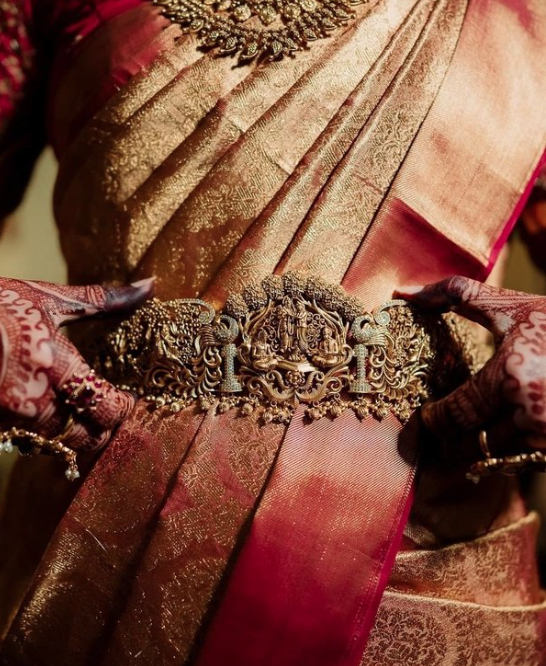
Kamarbandh or belly chain has been around for more than 4000 years and is considered to be a vital part of Solah Shringaar or “Sixteen Adornments” in the Hindu religion. Kamarbandhs come in a wide range of styles, designs, and materials, including gold, silver, and precious stones. They can be simple and delicate or ornate and elaborate and are often decorated with intricate designs and embellishments. In addition to their aesthetic appeal, kamarbandhs are also considered to have spiritual significance in Hinduism. They are believed to bring good luck and protection and to enhance the beauty and femininity of the wearer. They are also believed to help in maintaining good posture and stability.
Kamarbandh is also said to have many health benefits for women as they press on many important acupressure points. It’s said to help maintain a healthy weight and promote digestion. Among women, the kamarbandh also helps with regulating menstrual cycles and provides a healthier menstrual experience. When you wear a kamarbandh made of silver, it’s also said to have an antimicrobial effect on the body and help in the regulation of heat and blood circulation around the body. Kamarbandhs have remained their aesthetic appeal and can be often seen as a lehenga belt in many Indian bridal looks.
#13 Payal
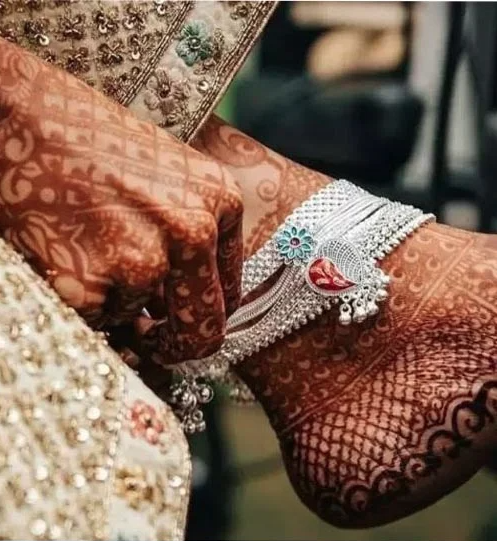
Payal or anklets are worn by Indian women from the time they are born. Silver payals are often seen on the legs of babies, and are often seen as an ornament on married women as a part of their Solah Shringaar list. Payals come in a variety of styles – from delicate to ornate – there’s something for everyone in the payal realm. Payals are often made with silver with little ghungroos to make a jingling noise every time you step. It’s said that payals helped male members of the family to become aware of a woman entering so they can create a suitable and respectful environment for them. It’s also believed that the noise of anklets wards off negative energies and promotes a positive environment. Anklets also help to draw the attention of husbands toward their wives.
The history of payal, or traditional Indian ankle jewelry, dates back to ancient times. In ancient India, payals were made of gold and were worn by both men and women as a symbol of wealth and status. Over time, the design and style of payals evolved to include intricate embellishments, such as bells and beads and became more associated with women. Besides India, they have also been worn by Egyptian women since predynastic times and also became popular as delicate anklets in the USA by the 19th century.
#14 Bichiya
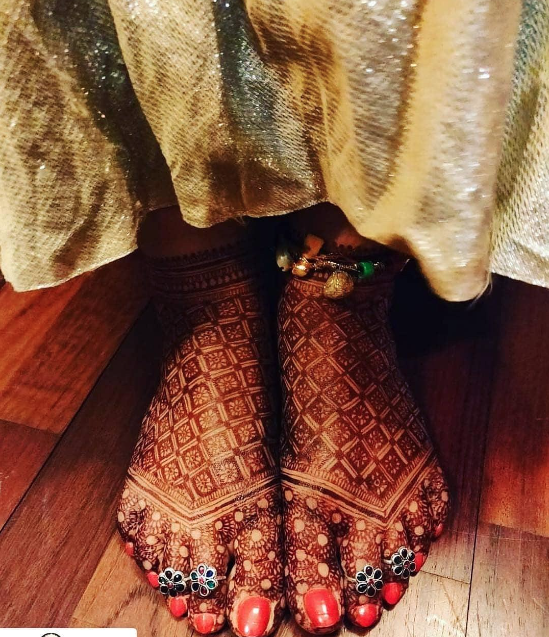
Toe rings, also known as bichiya, are an important part of traditional Indian culture, especially for married women. They are usually made of gold or silver and are worn on the second toe of the right foot. In Hindu culture, wearing a toe ring is considered a symbol of a woman’s marital status and is believed to bring good luck and prosperity to the wearer. The toe ring is also thought to represent the union between a married woman and her husband and is seen as a symbol of their love and commitment.
Additionally, toe rings are also believed to have health benefits. According to Ayurveda, the ancient Indian system of medicine, the second toe is connected to a nerve that leads to the uterus, and wearing a toe ring on this toe is thought to stimulate the nerve and promote reproductive health. It also increases the chances of conception as the slight pressure ensures a healthy uterus. Today, toe rings are widely worn by married women in India, and continue to be an important part of Hindu culture and tradition. They are often paired with other forms of traditional jewelry, such as earrings, necklaces, and bangles, to complete the traditional Indian bridal look.
#15 Ittar
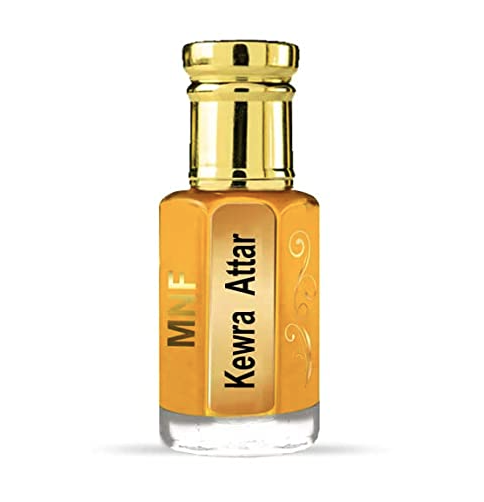
Ittar is a form of traditional perfume worn by Indian women as a part of their Solah Shringaar items. Attar or Ittar is basically a highly concentrated perfume formed by the distillation of many botanical or other natural sources like blooming flowers, herbs, barks, spices, etc. It has very low amounts of alcohol as opposed to commercial perfumes where the alcohol concentration is very high, so the scent doesn’t linger for long. Attar’s natural sources also have many other benefits for the human body. It is believed that wearing itar can help to purify the body and the mind and that the pleasant fragrance can help to lift one’s mood and promote a sense of well-being. In traditional Indian culture, itar, or perfume, has been used for centuries as a way to enhance personal hygiene and add a touch of elegance and sophistication to one’s appearance.
In Hindu culture, the attar is also considered to have spiritual significance and is used in many religious ceremonies, such as weddings and puja rituals. The fragrance of itar is believed to purify the air and create a sacred atmosphere, and it is often used as an offering to the gods and goddesses. Today, itar continues to be an important part of Hindu culture and tradition and is widely used by both men and women for personal grooming and to enhance their appearance. The use of itar has also become more widespread in other parts of the world, and it is now considered a symbol of elegance and sophistication worldwide. For brides, attar forms an important part of their look – during the wedding and through their married life as well.
Buy Here.
#16 Gajra
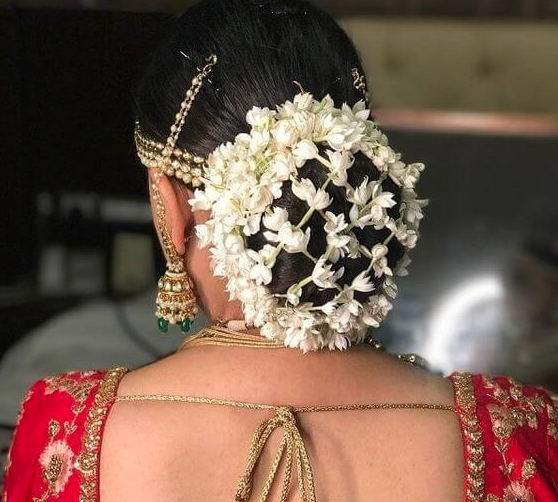
Gajra is a garland made of jasmine flowers and is used as a hair decoration accessory by Indian women, especially on their wedding day. The garland is used for decorative purposes only and has no role in holding the bun in place. Jasmine is also known as the Queen of flowers and is put in their hair to enhance the beauty of the tresses and elevate the look of the wearer as well. Gajras have been around for a long time and can also be seen in epics such as Mahabharata and Ramayan along with other representations of female Goddesses. In fact, the gajra is considered to be a favorite of Goddess Lakshmi and when the women in the house apply gajra, it’s said to invite the Goddess of prosperity and wealth into the house. Gajra is also offered during prayers to female Goddesses in India, and their statues of them are often seen with this garland as well.
Besides weddings, gajras are also traditionally worn on Karva Chauth. They are a sign of a married woman’s status, but in some cultures, even unmarried women wear them to signify that they are ready for marriage. Besides the visual appeal and elegance, jasmine also has a very captivating smell and is believed to spread the same sweet fragrance in the relationship of husband and wife as well. The smell of jasmine flowers is also considered to bring peace and happiness to the home, and that’s why you will see jasmine plants in the gardens of many Indian homes. Today, the gajra continues to be an important part of traditional Indian bridal attire and is a significant and enduring symbol in Hindu culture. It continues to be an expression of a bride’s beauty, elegance, and spiritual devotion and is considered an important part of Hindu wedding traditions and customs.

